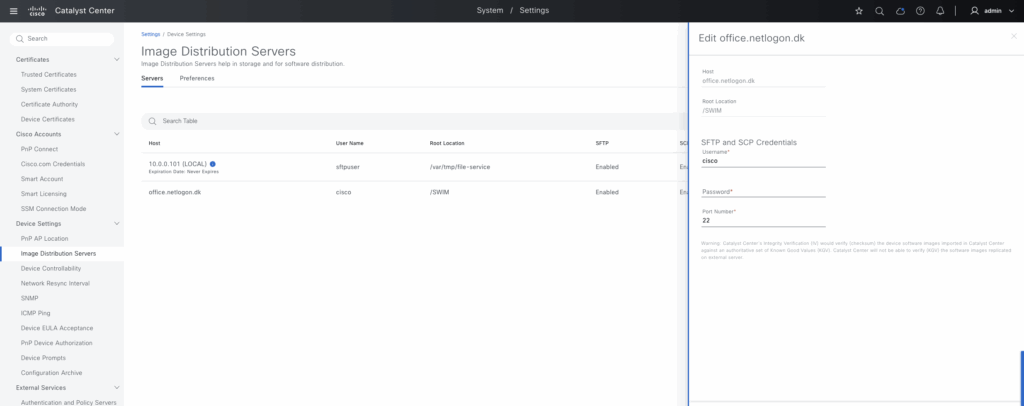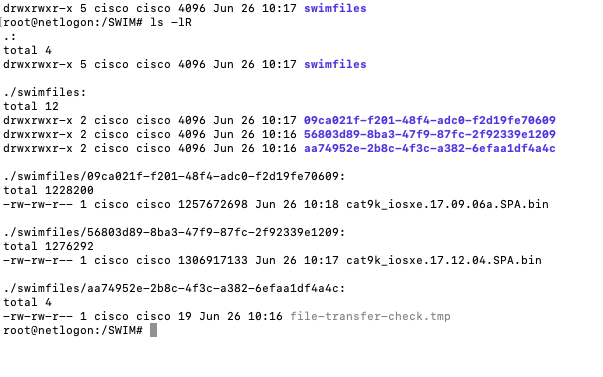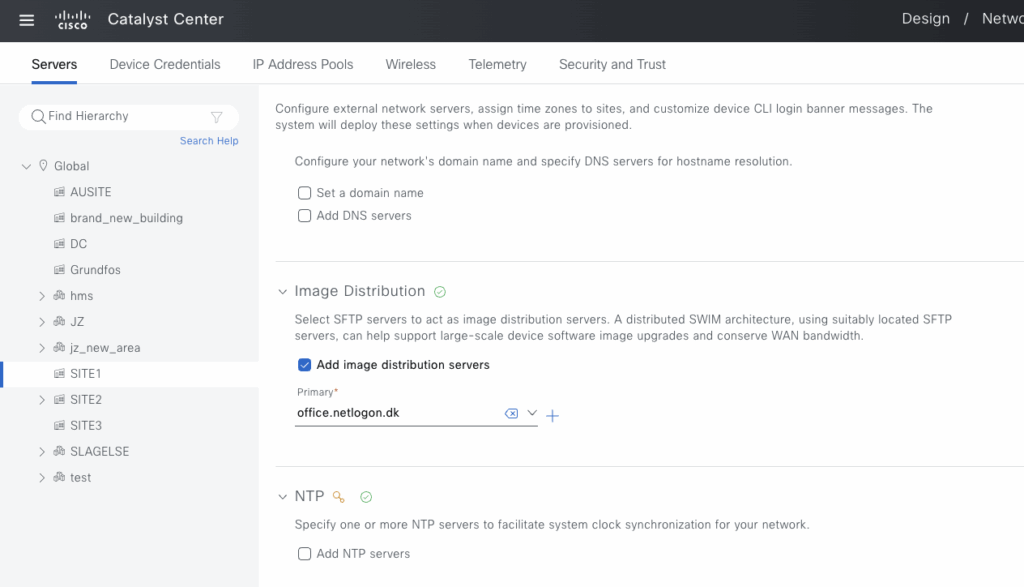If you need to update your network devices using Cisco Catalyst Center from an external source instead of the built-in image repository, this guide will walk you through the process step by step.
To provide Cisco software to your switches from an external location, you’ll need to set up your own SFTP host. Nearly any Linux server can provide this functionality out of the box – I used a default Ubuntu installation for testing purposes.
Please perform your own due diligence to set up a server that meets your specific security and performance requirements.
Requirements
- Sufficient free disk space to host all Cisco images for your entire inventory
- A user account with password-based login authentication
- SSH connectivity from Catalyst Center to your SFTP server
- Network connectivity from your device inventory to the SFTP server for SWIM operations
Configuration Steps
Once you’ve prepared your SFTP server with the appropriate user account and directory structure, follow these steps to configure Catalyst Center:
Step 1: Add your SFTP server in Catalyst Center by navigating to System > Settings > Image Distribution Servers

After adding the server, Catalyst Center will automatically synchronize ALL image files from its repository to your new SFTP server. This process may take some time depending on the number and size of your images.

Step 2: Configure which sites should use your new repository by adding it under Design > Network Settings for the relevant sites.

Step 3: You can now update switches and perform LAN automation as usual. Catalyst Center will automatically use your new repository for the sites you’ve specified in the configuration.
This setup provides greater flexibility for managing Cisco images across distributed environments and can help optimize bandwidth usage in remote locations.
Leave a Reply